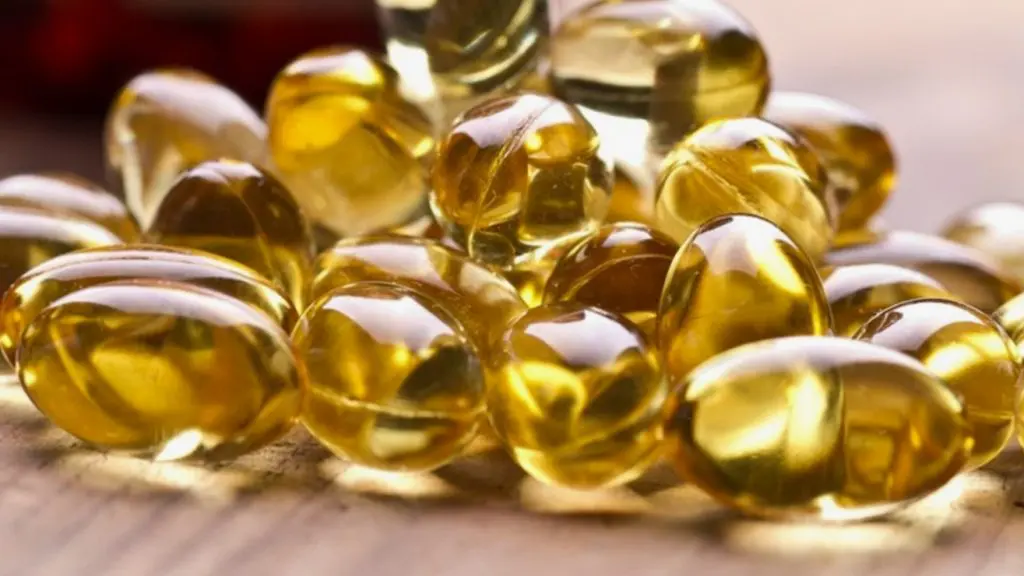Leangains is an eating and exercise system created by Swedish personal trainer, nutrition consultant, and powerlifter Martin Berkhan. Launched in the early 2000s, Leangains promises to build muscle and burn fat at the same time.
Unlike many body transformation programs, Leangains does not involve eating lots of small meals each day, and you won’t have to suffer through lots of bodybuilding and cardio workouts. Instead, Leangains combines intermittent fasting with short, infrequent powerlifting-style training.
Is this diet and workout system right for you? Keep reading to find out!
The Leangains Diet
Intermittent fasting, or IF for short, is a popular weight loss and fat burning method. With IF, you eat fewer meals per day and may even go without food for 24 hours or more.
Leangains uses a 16:8 approach to fasting. That means you fast for 16 hours and then eat during an eight-hour “feeding window.”
For example:
Level Up Your Fitness: Join our 💪 strong community in Fitness Volt Newsletter. Get daily inspiration, expert-backed workouts, nutrition tips, the latest in strength sports, and the support you need to reach your goals. Subscribe for free!
- 7 pm: last meal of the day
- 10 pm: sleep
- 6 am: wake up
- 11 am: 1st meal of the day (breakfast)
- 4 pm: 2nd meal of the day
- 7 pm: last meal of the day
Meals are generally high in protein, and Leangains recommends that you consume 1.1 to 1.4 grams per pound of body weight per day. Carbs are cycled so that you eat more on training days and less on non-training days. Your calorie intake depends on your training goal. You’ll eat less if you want to lose fat and get lean, but more if you are bulking.
According to studies, the Leangains 16:8 fasting diet has several positive effects and benefits (1):
1- Increased insulin sensitivity– insulin is an important hormone. Your body produces insulin whenever you eat, especially carbs. Its main job is to transport nutrients into your muscle and liver cells. However, if you have high insulin resistance, those same nutrients are more likely to be turned into fat.
Insulin also blocks fat burning. In addition, eating fewer meals per day means less insulin needs to be produced. Less insulin means a better environment for fat burning (2)
2- Better nutrition partitioning– eating after a fast means that the nutrients in your food are more likely to end up where your body needs them the most. This is called nutrient partitioning. Fasting helps to ensure that protein, which is broken down into amino acids, and carbs, which are broken down into glycogen, are preferentially transported into your muscles.
This speeds up your recovery from exercise and also helps keeps these nutrients away from your fat cells (2).
3- Better fat burning– compressing all your meals into an eight-hour feeding window means you are less likely to eat more calories than you need. Eating fewer calories forces your body to burn stored body fat for fuel by creating a calorie deficit. Also, some studies suggest that working out in a fasted state increases fat burning (3). With Leangains, you are encouraged to work out on an empty stomach, only breaking your fast once your workout is complete.

4- Increased muscle gain– fasting increases growth hormone and testosterone production. These anabolic hormones help increase muscle growth (4). These hormones also play an essential role in fat burning. Eating shortly after exercise, as recommended by Leangains, has also been shown to enhance muscle growth and speed up recovery.
5- Less hunger– small, frequent meals may make you hungry. A lot of people start to feel hungry at certain times of the day, just because that’s when they usually eat. In contrast, fewer, bigger meals can decrease hunger in some people (5). Less hunger means you’ll find it easier to eat less, and that means you’ll burn fat faster.
6- Easy to follow– if you’ve ever tried to eat six or more meals per day, you already know how time-consuming all that food prep can be. You also have to get into the habit of carrying food with you wherever you go. With Leangains, you just eat 2-3 bigger meals per day. This means less meal prep and no need to take food with you.
Leangains and Supplements
While you don’t have to use supplements on Leangains, they can be useful and could enhance your progress. The recommended Leangains supplements are:
Branched-chain amino acids– BCAAs for short, these are basically the building blocks of protein and muscle. Take 15 grams of BCAAs shortly before working out to boost energy and performance and prevent unwanted muscle breakdown.
Fish oils– containing essential fatty acids or EFAs for short, fish oils can help reduce inflammation and are good for your heart and brain too.
Creatine– this much-loved sports supplement can help increase strength, endurance, and muscle mass. Take 5-10 grams per day for best results.
Glucosamine– heavy training can be hard on your joints. Glucosamine may help to keep your joints healthy and pain-free.
Level Up Your Fitness: Join our 💪 strong community in Fitness Volt Newsletter. Get daily inspiration, expert-backed workouts, nutrition tips, the latest in strength sports, and the support you need to reach your goals. Subscribe for free!
Vitamin D– also known as the sunshine vitamin, vitamin D is vital for testosterone production and is linked to improved athletic performance.
Calcium– vital for healthy bones and powerful muscle contractions. It may also speed up fat loss and boost testosterone.
Leangains Workout Program
Martin Berkhan is a competitive powerlifter, so it’s no surprise that the workouts he recommends are based on the main power lifts – squats, bench presses, and deadlifts.
With Leangains, you work out three times per week, focusing most of your energy on heavy compound exercises. Berkhan recommends 2-3 sets of 3-5 reps for the first exercise in each program and 6-10 reps for the rest of your workout. This is essentially a power building program.
The workouts are short but intense. Short workouts are important because you’ll be training on an empty stomach and won’t have the energy for a long, high volume training session. This type of training builds muscle fast, and also increases strength.
A typical Leangains workout looks like this:
| Monday | Wednesday | Friday |
| Deadlifts | Bench press | Squats |
| Overhead press | Incline dumbbell press | Leg curls |
| Weighed chin-ups | Biceps curls | Cable crunches |
| Bent over rows | Triceps extensions | Calf raises |
After a warm-up, each exercise is done using the reverse pyramid method, also known as the heaviest set first training.
For example:
- 1stset 100kg
- 2ndset 90kg
- 3rdset 80kg
While the Leangains workouts are much shorter and contain fewer exercises and sets than most people are used to, studies suggest that they will deliver similar results to longer workouts (6).
The wrap-up
Leangains has been around for well over a decade, and that means it works – at least for some people. If it didn’t work, it would not be as popular as it is today. Leangains combines a proven diet, intermittent fasting, with an effective strength training program. If you stick to the diet and training plan, there is no reason it won’t produce good results.
That said, intermittent fasting is not for everyone. Some people find going without food for an extended period very difficult. They may feel exhausted, hungry, or weak. The workouts are tough, too, mainly because they involve heavyweights and challenging exercises.
The only way to really see if Leangains is right for you is to give it a try. We’ve only covered the basics of Leangains here. If you want all the details, you’ll need to check out the official Leangains website.
References:
1. Moro, Tatiana; Tinsley, Grant; Bianco, Antonino; Marcolin, Giuseppe; Pacelli, Quirico Francesco; Battaglia, Giuseppe; Palma, Antonio; Gentil, Paulo; Neri, Marco; Paoli, Antonio (10 13, 2016). “Effects of eight weeks of time-restricted feeding (16/8) on basal metabolism, maximal strength, body composition, inflammation, and cardiovascular risk factors in resistance-trained males”. Journal of Translational Medicine. 14 (1): 290. doi:10.1186/s12967-016-1044-0. ISSN 1479-5876. PMC 5064803. PMID 27737674.
https://www.ncbi.nlm.nih.gov/pubmed/27737674
2. Halberg, Nils; Henriksen, Morten; Söderhamn, Nathalie; Stallknecht, Bente; Ploug, Thorkil; Schjerling, Peter; Dela, Flemming (2005-12). “Effect of intermittent fasting and refeeding on insulin action in healthy men”. Journal of Applied Physiology (Bethesda, Md.: 1985). 99 (6): 2128–2136. doi:10.1152/japplphysiol.00683.2005. ISSN 8750-7587. PMID 16051710. https://www.ncbi.nlm.nih.gov/pubmed/16051710
3. De Bock, K.; Richter, E. A.; Russell, A. P.; Eijnde, B. O.; Derave, W.; Ramaekers, M.; Koninckx, E.; Léger, B.; Verhaeghe, J.; Hespel, P. (April 15, 2005). “Exercise in the fasted state facilitates fibre type-specific intramyocellular lipid breakdown and stimulates glycogen resynthesis in humans”. The Journal of Physiology. 564 (Pt 2): 649–660. doi:10.1113/jphysiol.2005.083170. ISSN 0022-3751. PMC 1464435. PMID 15705646. https://www.ncbi.nlm.nih.gov/pubmed/15705646
4. Ho, K. Y.; Veldhuis, J. D.; Johnson, M. L.; Furlanetto, R.; Evans, W. S.; Alberti, K. G.; Thorner, M. O. (1988-04). “Fasting enhances growth hormone secretion and amplifies the complex rhythms of growth hormone secretion in man”. The Journal of Clinical Investigation. 81 (4): 968–975. doi:10.1172/JCI113450. ISSN 0021-9738. PMID 3127426. https://www.ncbi.nlm.nih.gov/pubmed/3127426
5. LeSauter, Joseph; Hoque, Nawshin; Weintraub, Michael; Pfaff, Donald W.; Silver, Rae (August 11, 2009). “Stomach ghrelin-secreting cells as food-entrainable circadian clocks”. Proceedings of the National Academy of Sciences of the United States of America. 106 (32): 13582–13587. doi:10.1073/pnas.0906426106. ISSN 1091-6490. PMC 2726387. PMID 19633195. https://www.ncbi.nlm.nih.gov/pubmed/19633195
6. Fisher, James Peter; Blossom, Dominic; Steele, James (2016-02). “A comparison of volume-equated knee extensions to failure, or not to failure, upon rating of perceived exertion and strength adaptations”. Applied Physiology, Nutrition, and Metabolism = Physiologie Appliquee, Nutrition Et Metabolisme. 41 (2): 168–174. doi:10.1139/apnm-2015-0421. ISSN 1715-5320. PMID 26789094. https://www.ncbi.nlm.nih.gov/pubmed/26789094









